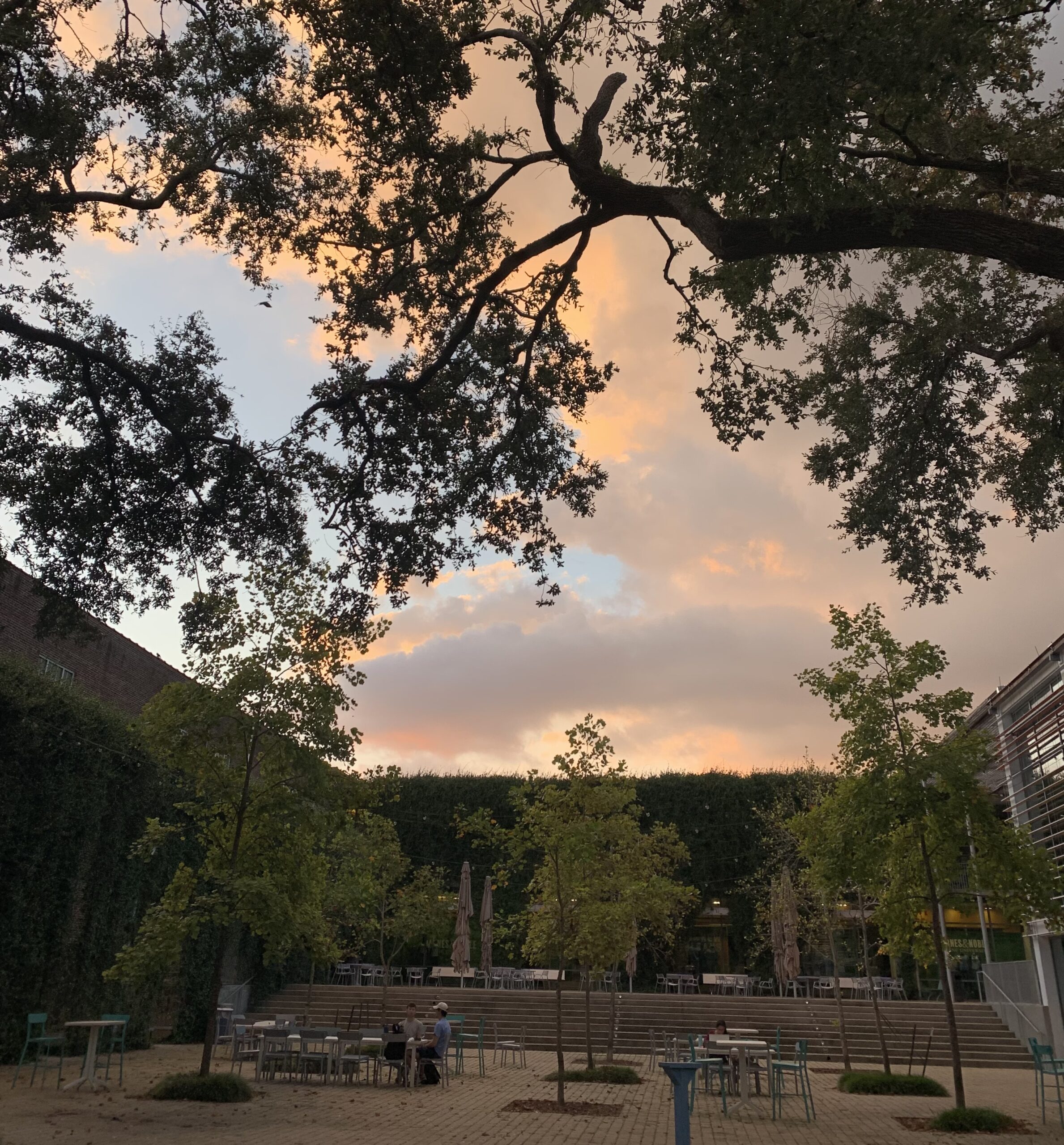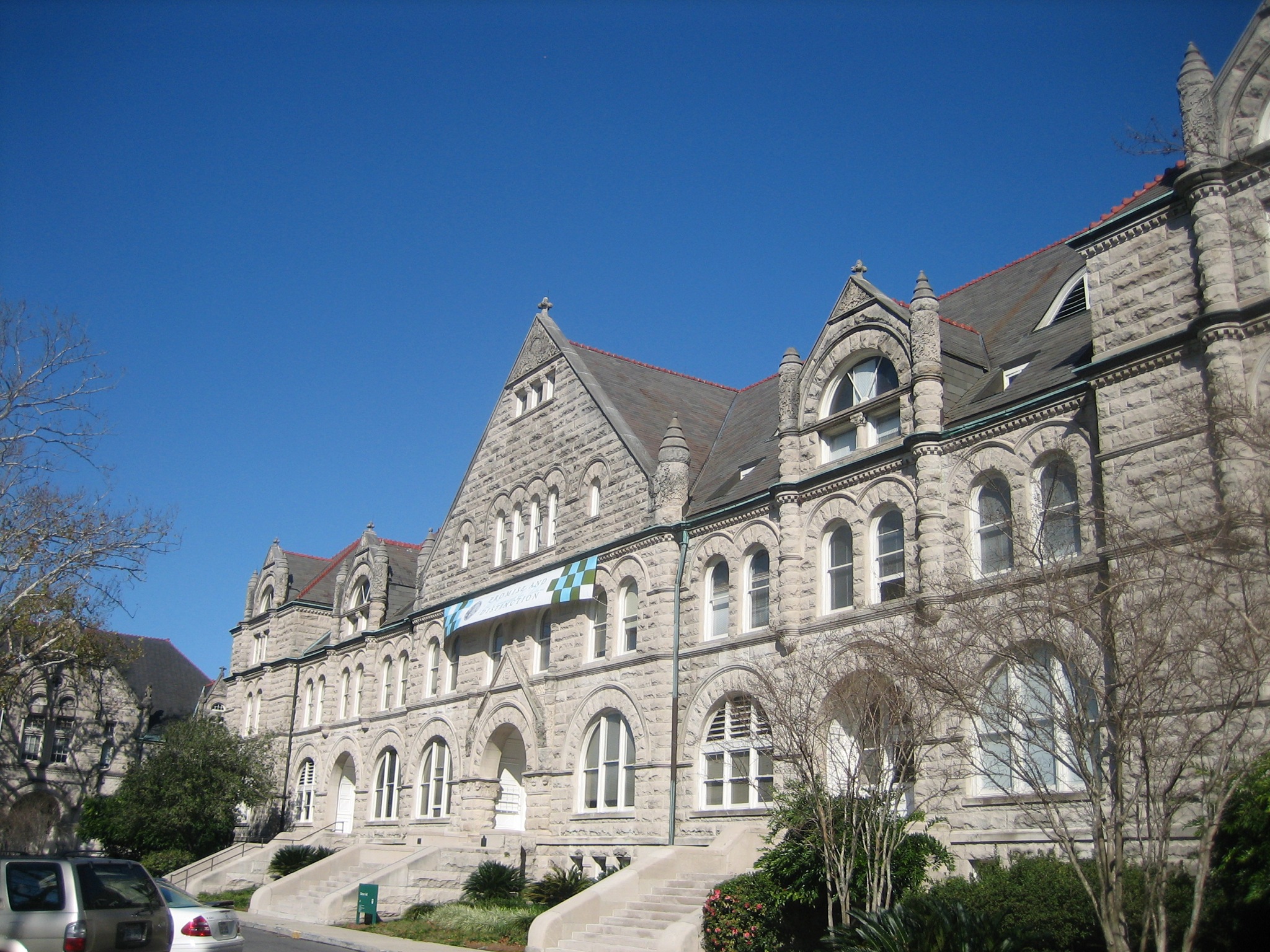Editor’s Note: It’s officially March, so we are marching into solutions. Yes, we’re aware of how lame that pun is! We also think it’s lame that a lot of journalism likes to describe everything that’s wrong with the world without showing data-driven examples of solutions that work! We don’t accept that, so this month we are marching (oof, there it is again) into solutions. We’ll be taking issues/problems from the Nola community and doing the research to find solutions that have proven to work! It’s solution journalism, and we’re continuing with how organizations can do better!

How can the grass be greener? (Photo: Pexels)
Part I: The Issue
In February of 2020, Tulane University of New Orleans sent out an email to its students, faculty, and staff, reporting that the university had made an unexpected discovery surrounding the “Victory Bell” that had stood outside of McAllister Auditorium at the center of campus. The bell which was used to ring the victory of Tulane’s Green Wave sporting events, served as a good luck charm to the incoming freshman class each year and was a focal point of tours for prospective students, was discovered to have once been used as a plantation bell. In his email, Mike Fitts assured the students that the bell was being removed immediately for further investigation. While some students felt that the presence of the bell on campus was important to remind occupants of the campus of the institution’s racist past, others felt that the removal was a necessary action as it had no place on campus anymore. However, despite the dispute about whether the university should remove the monument, what is more concerning is how long it took to identify the evil history of the bell.
But the bell is not the only reminder of Tulane’s racist and unequal past present on campus today. There are several buildings on campus, including Gibson Hall, F. Edward Hebert Hall, Tilton Memorial Hall, as well as the university’s name itself, that pay tribute to privileged white men who although made strides for the establishment of the university, also proudly asserted their white supremacist views in the past. Paul Tulane, who the university is named after, gained his fortune from his father off slave labor in Haiti and once he moved to Louisiana, he became the most generous contributor in New Orleans to the Confederacy. Gibson Hall was named after Randall Lee Gibson who was raised in Louisiana on his father’s sugar plantation run by slaves and was a General in the Confederate Army. Hebert Hall was named after F. Edward Hebert who was an outspoken supporter of segregation and racism. Tilton Memorial Hall was named afterFrederick W. Tilton, who was also a vocal advocate of the Confederacy.
Although the school took immediate action when learning about the unpleasant past of the Victory Bell, they are aware of the significance and history of these building names and continue to make no changes.
The names that represent these prominent buildings on Tulane’s campus set a precedent for the schools’ beliefs and values. In a recent demographic post issued by the university, Tulane has just admitted its most diverse class ever with 30% of the incoming class being students of color. According to Tulane’s statement on equity, diversity, and inclusion, “to become a truly great university… Tulane must be an equitable, diverse, and inclusive community that welcomes and supports a diverse array of students, faculty, and staff.” So, if Tulane claims to strive to welcome their community of diverse students with open arms, why are their buildings still named after those who oppressed their families years ago? To keep these names is to honor those who benefited from systems of slavery and systemic racism.
Back in 2017, students Shahamat Uddin, Sonali Chadha, and Juharah Worku had original legislation passed by the Undergraduate Student Government that demanded the renaming of racist buildings on Tulane’s campus. There was no further action taken by the school’s administration. Additionally, in June of 2020, University President Mike Fitts put out a statement in an email to the public addressing a “Name Reviewing Task Force” where he would develop community-wide principles to guide our decisions in naming or renaming our buildings.” Again, no further action was taken.
This is an issue because if the administration of Tulane sees the renaming of these influential focal points on campus as an obligation rather than an opportunity to grow as a community, racism will continue to be upheld at the institution.
Aside from the values of Tulane influencing its students, faculty, and staff, the university has a significant impact on New Orleans overall. According to a recent report from President Mike Fitts regarding the economic and social impact of Tulane University and powering New Orleans and Louisiana, “Tulane’s operations, capital investments, and other activities contribute $3.14 billion to Louisiana’s economy each year, making the success and future of New Orleans and Tulane University more intertwined than ever.” Additionally, the report stated that 25% of Tulane graduates will stay in Louisiana following graduation. The information presented in this report, as well as observing the influence of Tulanians myself first-hand, demonstrates the ripple effect that a respected institution and its inhabitants have on a much larger diverse community. The racist building names on Tulane’s campus honor the racist foundation and history of the university, while inadvertently refusing to address those that the establishment has oppressed.
For Tulane University to acknowledge its racist past and grow closer to its internal and external community, it must give praise for moral actions rather than praising bad behavior through recognition. This means that instead of removing the names of these racist white men and dwelling on this withdrawal; instead, we should rename the buildings to honor those who have influenced Tulane’s growth towards a more inclusive and equal atmosphere.

Tulane’s LBC Pocket Park.
Part II: The Solution
The solution-based response to remind one of the struggles they have overcome and the successes that they have achieved can be found in an organization known as Alcoholics Anonymous and their use of sobriety tokens. Alcoholics Anonymous (AA) is an international fellowship consisting of people who have had a drinking problem. In this 12-step recovery program, participants share their experiences concerning their destructive pasts in hopes to gain insights from others on their journey towards leading a sober life. The most important element of this program is to consistently take individual moral inventories. These inventories entail taking accountability for their past actions that have harmed themselves and others in their lives. These amends need to be addressed directly so that they can further progress in their sobriety.
In the mid-1950s Sister Mary Ignatia, a non-alcoholic friend of Alcoholics Anonymous, worked at the St. Thomas Hospital in Akron, Ohio, where she began to hand out Sacred Heart Badges to those who left her care as a token to remind them of their sober success. Since this introduction, these tokens of success, or sobriety chips, have become a key component in the success of Alcoholics Anonymous members’ sobriety.
Sobriety chips are small, round, and colorful tokens that are given to members of Alcoholics Anonymous when they have reached a new achievement in their sobriety journey. Upon their first meeting, members are given their first coin for deciding to drastically change their lives and embark on their commitment to being sober. Various timely achievements are marked with various colored coins. Although the marker of their accomplishment may be a physically small token, both emotionally and mentally, it has a much greater influence. Sobriety chips lead to success because they can encourage and set goals for other Alcoholics Anonymous members. The chips remind them of their progress and desire to have a fresh and clean life.
Often in life, we say that a person’s past has the power to define them, but Alcoholics Anonymous reminds us that although our history can be evil at times, we as individuals and communities are capable of positive change. The implementation of sobriety chips into the Alcoholics Anonymous program demonstrates how small indications of change can help us remember our pasts while feeling supported and motivated with our progression over time. Rather than praise bad behavior through recognition, Alcoholics Anonymous only provides an incentive for praise, or the sobriety chips, when a member has fulfilled their prompt moral duties.
Additionally, Alcoholics Anonymous’ 12-step program offers insight that healing is a process that takes time, and is broken up into smaller, more manageable timelines. The first three steps are called surrender steps, four through nine are called action steps, and ten through twelve are maintenance steps. Each of these individual steps includes admitting wrongs done unto others to further understand the self. This strategic method of self-reflection ultimately leads to positive personal progress while bettering the overall community. Although the success rate of Alcoholics Anonymous is a difficult thing to measure, because the programs’ fellows are meant to be anonymous, and their reports may be influenced by many different factors, there are still reports about the programs’ success rate. According to Alcoholics Anonymous’ “Big Book,” there is a 50 percent success rate for members in staying sober. Additionally, according to the 2014 Membership Survey, 22 percent of members stay sober for 20 or more years.
The limitation to giving praise for moral actions in Alcoholics Anonymous is that it ultimately sets a time frame for success with sobriety. This positive reinforcement may make the member feel powerless if they have a setback that does not align with the time frame provided by the program. Time is a key component of healing, so to have a physical reminder of a setback, the sobriety coin, could be a challenge to some. Additionally, the social aspects of the program, including the particularly public nature of the crowd setting, are uncomfortable for some. The idea of acknowledging their wrongdoings and confronting their evils in a group environment may be a challenge.
Although it is difficult to conduct studies that identify the impact that this solution shows because of the anonymity that the program promotes, the National Institute of Alcohol Abuse and Alcoholism (NIAAA) administered a study that investigated the effectiveness of different treatments and their ability to reduce drinking. These three treatment types included the 12-step program, cognitive behavioral therapy, and motivational therapy. Of the three, the 12-step program demonstrated the most considerable long-term effect. Therefore, promoting praise through moral actions has proven to be a desirable method for growth.
Part III: Implementation
Tulane needs to take accountability for praising bad behavior through recognition on their campus and follow the lead of programs that praise moral actions like Alcoholics Anonymous and their implementation of sobriety coins and the 12-step program. Alcoholics in the program may have evil pasts but they use these policies as physical reminders of their impressive achievements and how far they have come. Tulane University may have an evil past, but they should use their physical reminders around campus to demonstrate their impressive achievements and how far they have come.
In September 2021, the University of Alabama System Board of Trustees voted to rename two buildings previously named after two people with racist views and involved in the Confederacy during the civil war. These buildings were renamed after people who bettered their community, like the first Black faculty member at the University. Many universities throughout the nation have followed in their footsteps.

Gibson Hall at Tulane University (photo by Francois Gemenne – Flickr)
One suggestion is to rename outdated buildings on campus after Pearlie Elloie and Barbara Guillory Thompson, the first two African American students admitted to the university in 1963 during the New Orleans school crisis concerning desegregation. It is individuals such as Elloie and Thompson that have made momentous improvements to the school and need to be honored and remembered.
The difficulty with this response to racist building names on campus would be that some students, faculty, staff, and people of the public would view this solution as Tulane trying to erase their past like many felt held true with the removal of the Victory Bell. Similar to the meaning behind the sobriety coins in Alcoholics Anonymous, when a building on Tulane’s campus is renamed out of moral consciousness, there should be a stamped emblem on the new building name plaque. This stamp would be a recognized marking throughout campus to communicate an ethic change has been made to better the sense of an inclusive community at Tulane. Like the chips, this emblem would remind the community of their progress and desire to have a fresh campus.
This solution would work because it is a compromise between the different sides of this controversy. Like the power that the Alcoholics Anonymous sobriety chips and 12-step program hold, if Tulane were to implement these reforms to the naming of their campus buildings, and enforce a recognizable emblem of ethical change on the building name plaque, they would take their moral inventories and admit their wrongs to others. Tulane University has a commitment to its members to uphold the values of inclusivity and comfort that they claim to possess by renaming their buildings on campus to reflect those who have demonstrated moral and honorable actions.
Sources
President’s Departmental/Team … – Tulane University. https://president.tulane.edu/sites/president.tulane.edu/files/2019_pde_nomination_form%5B1%5 D.pdf.
“Equity, Diversity & Inclusion.” Tulane University, 4 Oct. 2021, https://tulane.edu/edi. “Tulane Has Yet to Repent for the Oppression That Characterizes Its Origins.” Tulane, 14
Dec. 2016, https://thetab.com/us/tulane/2016/12/13/paul-tulane-confederacy-2243.
Marks, Jonathon. “Uptown Buildings Shed Light on Founding Members of the University.” The Tulane Hullabaloo, 7 Dec. 2017, https://tulanehullabaloo.com/34395/news/uptown-buildings-shed-light-founding-members-unive rsity/.
Soares, Haley. “Tulane’s Hebert Hall Takes on New Name in Face of Controversy • the Tulane Hullabaloo.” The Tulane Hullabaloo, 7 Aug. 2020, https://tulanehullabaloo.com/53478/news/tulanes-hebert-hall-takes-on-a-new-name-in-face-of-co ntroversy/.
“Gibson Hall — Tulane University.” Clio, https://www.theclio.com/entry/51877. “Naming Review Task Force.” President,
https://president.tulane.edu/naming-review-task-force.
President’s Departmental/Team … – Tulane University. https://president.tulane.edu/sites/president.tulane.edu/files/2019_pde_nomination_form%5B1%5 D.pdf.
rserven@al.com, Ruth Serven Smith |. “University of Alabama System Renames the Ferg, Moore Hall.” Al, 19 Sept. 2021, https://www.al.com/education/2021/09/university-of-alabama-system-renames-the-ferg-moore-h all.html.
“Anonymously Restored: The Natural Partnership and Mutual Instruction of Alcoholics Anonymous and Restorative Justice.” Taylor & Francis, https://www.tandfonline.com/doi/abs/10.1080/10282580.2014.883842?needAccess=true&journa lCode=gcjr20.
“Pros and Cons of 12 Step Recovery Programs for Addiction Treatment.” Vertava Health, 20 Aug. 2020, https://vertavahealth.com/blog/pros-cons-12-step-programs/.
 NOLAbeings Multimedia artist Claire Bangser created NOLAbeings as a portrait-based story project that marries...
NOLAbeings Multimedia artist Claire Bangser created NOLAbeings as a portrait-based story project that marries...  Voodoo in New Orleans: Reviving history: New Orleans fortune telling This article takes a deep dive into the history of Voodoo in New Orleans, its hybridization with Catholicism, and its present-day place in the city's culture. The author visits fortune-tellers in the French Quarter, using their guidance as a tool for introspection rather than a deterministic predictor of the future. Through her experiences in New Orleans, the author feels a mystical connection to both the past and the future.
Voodoo in New Orleans: Reviving history: New Orleans fortune telling This article takes a deep dive into the history of Voodoo in New Orleans, its hybridization with Catholicism, and its present-day place in the city's culture. The author visits fortune-tellers in the French Quarter, using their guidance as a tool for introspection rather than a deterministic predictor of the future. Through her experiences in New Orleans, the author feels a mystical connection to both the past and the future. 